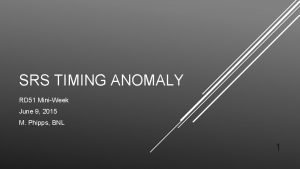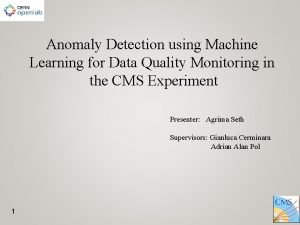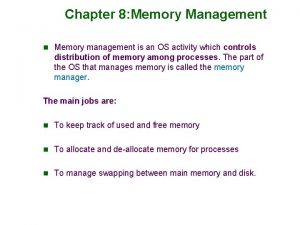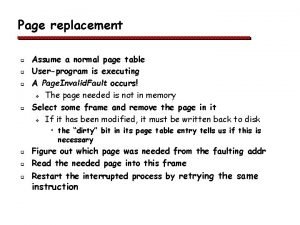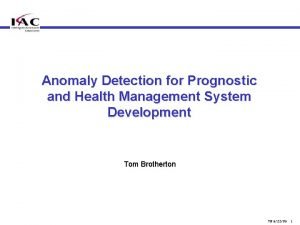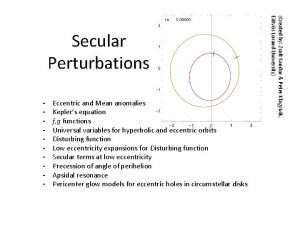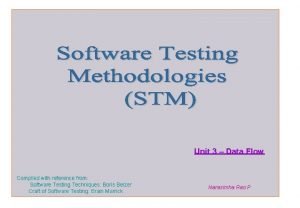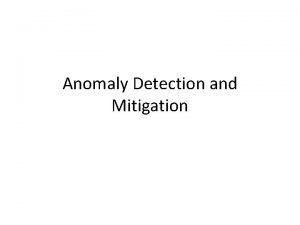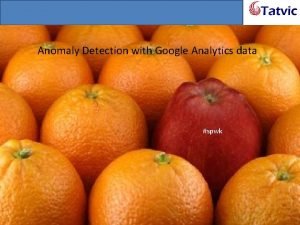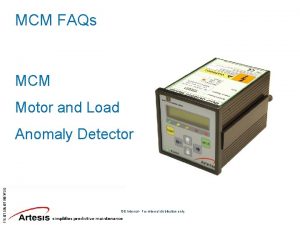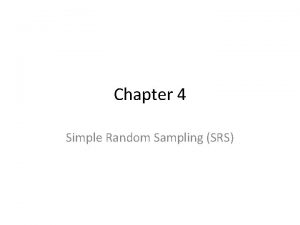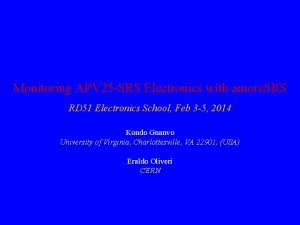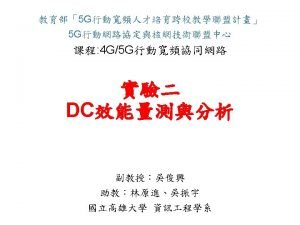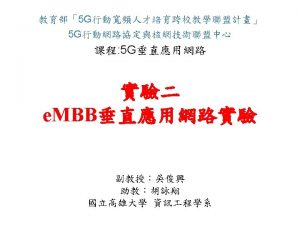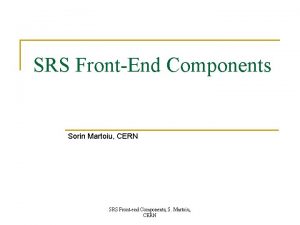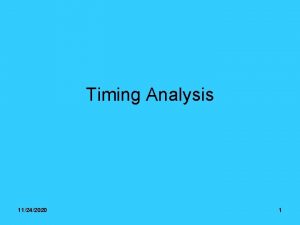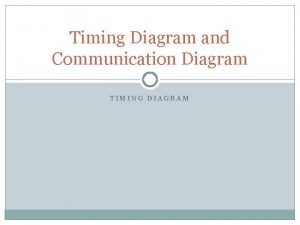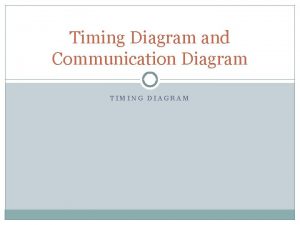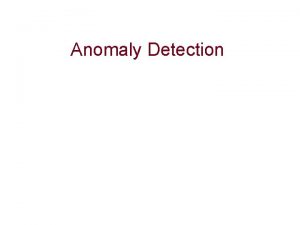SRS TIMING ANOMALY RD 51 MiniWeek June 9













- Slides: 13

SRS TIMING ANOMALY RD 51 Mini-Week June 9, 2015 M. Phipps, BNL 1

USING THE SRS TO MEASURE TIME WITH AN EXTENDED DRIFT GEM DETECTOR - Detector concept: Improve GEM resolution at large angles by widening drift gap and allowing vector reconstruction - Dependent on timing resolution and shaping time of readout system Angled track from test beam data Mesh Primary Charge Fluctuation Drift Gap 17 mm GEM 1 GEM 2 GEM 3 Transfer 1 1. 5 mm Transfer 2 1. 5 mm Induction 2 mm X-Y Strips Pitch: 400 um Preamp/Shaper Track reconstruction: Find centroid for each time slice Track reconstruction: Use edge of time bin to reconstruct z coordinate 2

Timing Resolution of SRS Studied In-Lab Using Function Generator - Twisted pair soldered directly to 2 separate readout strips - Circuitry on APV protected - Grounding connections made and board wrapped in aluminum foil for shielding - Signal In: Function gen -> capacitor box -> Compass board - Signal Out: SRS 3

EXPECTED TIMING JITTER: 25/SQRT(12) EFFECT FROM UN-SYNCED CLOCKS NIM Trg In to SRS Clean trigger in Some ringing in trigger out Trg Out from SRS Trigger on Trg In on scope Measure SRS Trigger Jitter 25 / Sqrt(12) 4

Use Function Generator to Go In and Out of Phase with SRS Mean time of waveform SRS Internal Pulser Internal pulser data shows clean distribution “In phase” External Pulser “Out of phase” External Pulser In Phase External Pulser 25 ns ***UNEXPECTE D TIMING JITTER*** Note: - Pulser and SRS clocks drift over time - Cannot be perfectly in phase w/o synching clocks Out of Phase External Pulser Ext pulser data shows timing jump 5

Investigating the Timing Jump Further: “Measure our Measurement” from In Phase (sigma = 0. 97 ns) External Pulser Data Residual Mean Time of Two Channels Mean Time of Channel 1 Measurement Error (pedestals, etc) accounts for width measured time but not timing jump Mean Time of Channel 2 6

Investigating the Timing Jump Further: Waveforms from the two timing peaks are identical - Same pulse shifted in time - Discreteness visible in raw data plots Peak 1 Peak 2 7

Investigating the Timing Jump Further: Fluctuations in Frequency of Timing Jump In Phase/Out of Phase Ext. Pulser Data Shown On Previous Slides In Phase Ext. Pulser Data Taken on Same Day … Different Day/Same Test Conditions as Upper Plots 1: 1. 8 Ratio 1: 4 Ratio - Ratio Consistent in Short Term - Fluctuates on Different Days (Strange – Temperature Dependence? ) 8

INVESTIGATING THE TIMING JUMP FURTHER: DO 2 APVS JUMP TOGETHER? … YES - Tested external pulser on channels from two separate APVs - Both showed timing jump - But timing residual between the two channels was single peaked -> jump happens together APV 1 Timing Residual of 2 APVs APV 2 9

Similar Results at University of Virginia SLIDES FROM KONDO GNAVO 10

APV 25 signal timing with external pulse generator (U of Virginia: Oct. 2012) Setup APV 25 -SRS with external pulse Signal peak at time slice 5 Distribution of time slice of the peak Signal peak at time slice 4 11

APV 25 signal timing with FTBF Test beam data (U of Virginia: Oct. 2013) Timing correlation x-strips/y-strips • Study of the timing of the APV 25 -SRS signal from test beam data taken with SBS GEM at Fermilab • Distribution shown for hit x and y strips • APV 25 on x and y on to different FEC/ADC combos • Good timing x/y correlation • Peak of the timing spread over at least two time slices Time slice of signal peak x-strips FEC/ADC 1 Time slice of signal peak x-strips FEC/ADC 2 12

SRS Timing Jump What it Isn’t - Not dependent on width of discriminated NIM pulse Apparently not caused by ringing on our end Not dependent on test setup. Present when we directly inject on strips as well as normal GEM operation Not dependent on relative location within time bin. Same distribution for 5, 10, 15, … ns delay between external pulser channels - Not dependent on particular APV: ie when one APV jumps both jump What it Is (or might be) - Appears to be caused by something in external trigger pipeline – timing jump not there for internal pulser triggered data but is for external pulser triggered data - Smaller (trigger) peak seems to come first - Ratio of timing jumps consistent in the short term but changes by the day - ~25 ns apart. One clock cycle. - Discreteness is visible by eye in raw data plots. Obvious 1 time bin shift in line with observed ratio - Present for random as well as cyclic (function generator) triggers. Random triggers have full sqrt(12) effect convoluted in data, while cyclic triggers have < sqrt(12) convoluted - Ringing effect within FEC/SRS? - Ideas? ? ? 13
 Srs timing
Srs timing Most common congenital anomalies
Most common congenital anomalies Anomaly detection for data quality
Anomaly detection for data quality Belady's anomaly example
Belady's anomaly example Belady's anomaly example
Belady's anomaly example Anomaly management systems
Anomaly management systems Mean anomaly
Mean anomaly Size of the ark in feet
Size of the ark in feet True anomaly calculator
True anomaly calculator Application of data flow testing
Application of data flow testing Choledocolithaisis
Choledocolithaisis Cisco anomaly detector
Cisco anomaly detector Anomaly detection in google analytics
Anomaly detection in google analytics Mcm anomaly
Mcm anomaly
